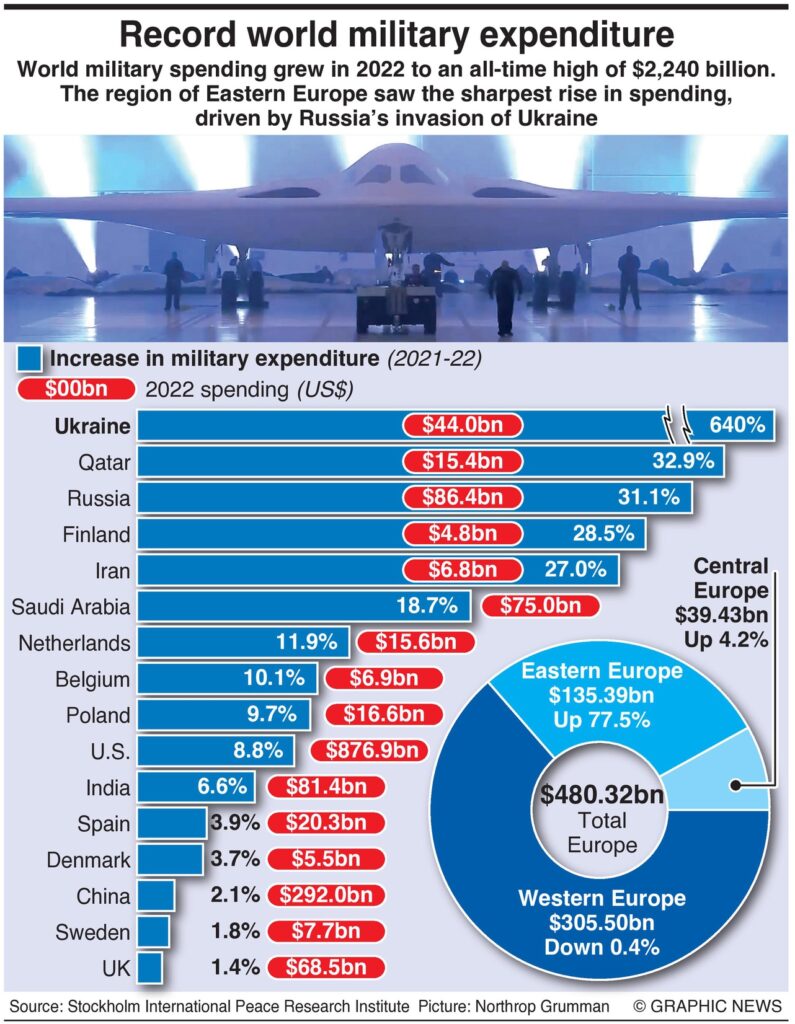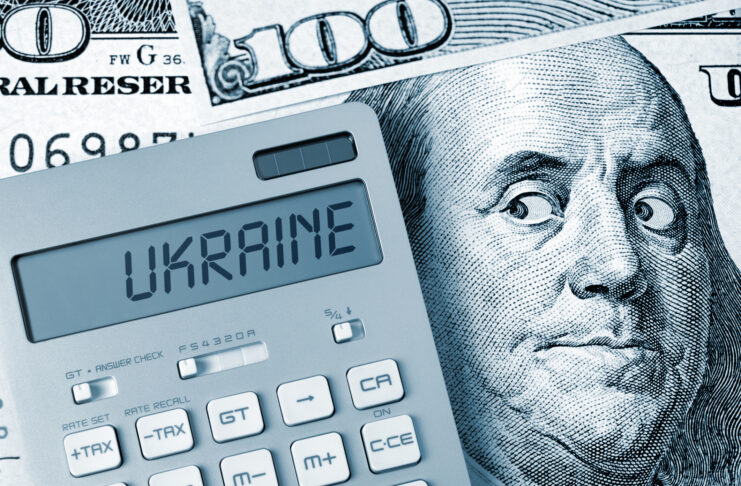ANALYSIS – Global military spending reached an all-time high of $2.24 trillion in 2022, according to a leading defense think tank. Eastern Europe saw the sharpest rise in spending, driven by Russia’s invasion of Ukraine.
However, increasing tensions due to Chinese belligerence in the Pacific also contributed to the sharp increase.
The U.S. and China are by far the biggest defense spenders in the world.
However, military expenditure in Europe saw its steepest year-on-year increase since the end of the Cold War, up 13 percent, the Stockholm International Peace Research Institute, SIPRI, said on Monday.
Russian military spending grew by an estimated 9.2 percent in 2022 to around $86.4 billion – equivalent to 4.1 percent of Russia’s gross domestic product (GDP) in 2022, up from 3.7 percent of GDP in 2021.
Ukraine’s military spending reached $44.0 billion in 2022. At 640 percent, this was the highest single-year increase in a country’s military expenditure recorded in SIPRI data.
As a result of the rise and the war-related damage to Ukraine’s economy, military spending as a share of GDP shot up to 34 percent of GDP in 2022, from 3.2 percent in 2021.
But some European countries have been ramping up military spending for a few years.
“Many former Eastern bloc states have more than doubled their military spending since 2014, the year when Russia annexed Crimea.”
Still, Russian threats to Europe are only part of the equation.

“The continuous rise in global military expenditure in recent years is a sign that we are living in an increasingly insecure world,” said Dr. Nan Tian, Senior Researcher with SIPRI’s Military Expenditure and Arms Production Program.
“States are bolstering military strength in response to a deteriorating security environment, which they do not foresee improving in the near future,” Tian added.
And Chinese (and Russian) threats in Asia are also significant factors.
According to Al Jazeera, “Japan and China led military spending in Asia and Oceania, which amounted to $575bn. SIPRI said military expenditure in the region had been rising since at least 1989.”
China reportedly remains the world’s second-largest military spender, spending an estimated $292bn in 2022. This was 4.2 percent more than in 2021 and is part of a massive, years-long military buildup.
However, as I have explained before, Chinese military spending is significantly higher, based on actual purchasing power (bang for their buck) and deliberately opaque and misleading statistics provided by the Chinese Communist Party (CCP) and People’s Liberation Army (PLA).
Meanwhile, Japan spent $46bn on the military in 2022, a 5.9 percent increase over last year. SIPRI said it was the highest level of Japanese military spending since 1960.
Al Jazeera added:
Tensions in East Asia have risen over the self-ruled island of Taiwan, which Beijing considers part of its territory. China also lays claim to almost all of the South China Sea, a major maritime trading route, parts of which are also claimed by countries including the Philippines, Vietnam and Malaysia.
Japan and China are also embroiled in a dispute over the Senkaku or Diaoyu Islands, which lie northeast of Taiwan.
Tokyo also has a long-running dispute with Moscow over the Northern Territories, which lie northeast of Hokkaido and were seized by the Soviet Union at the end of World War II. Russia calls them the Kuril Islands.
The United States is still considered the world’s largest military spender with reportedly 39 percent of total global military spending.

But since the defense spending figures for China are deeply underestimated, these global percentages are also questionable.
The U.S. increase was largely driven by “the unprecedented level of financial military aid it provided to Ukraine,” SIPRI’s Nan Tian said.
Still, according to SIPRI, the U.S. defense budget was only up 0.7 percent to $877bn in 2022. The U.S. figures for 2023 will be higher.
And thanks to China and Russia, they need to be.
The opinions expressed in this article are those of the author and do not necessarily reflect the positions of American Liberty News.
